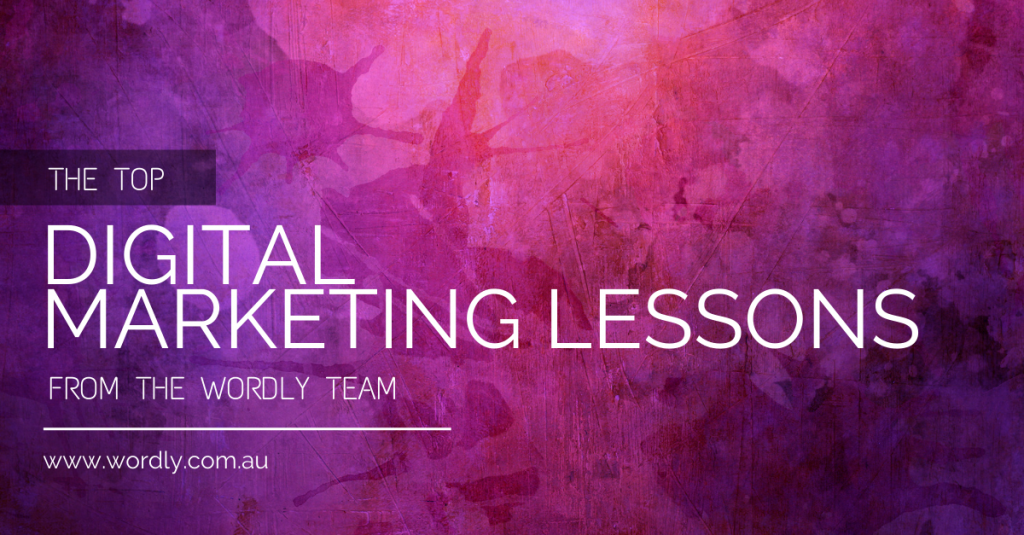The team at Wordly is definitely not perfect.
In fact, over our 15 years in the industry, we’ve made our fair share of marketing mishaps. Rest assured you haven’t stumbled upon a corporate confessional of our biggest blunders. But we have been reflecting on the lessons learned over our years in the game. And we can’t help but be grateful for the marketing mistakes that provided crucial learning opportunities.
Once sub-par protocols have evolved into industry leading practices that have shaped us into the Wordly wizards you know today. And although these lessons are passed through the Wordly team like a communal cookie jar, we thought it was high time we shared our top tips with you!
Maybe we’re making these mistakes so you don’t have to. Or perhaps you find yourself in the same boat as we once did. Whatever it may be, we hope our learnings can steer you into the most fine-tuned digital marketing strategy imaginable.

Content for the Sake of Content
Oh man, this one makes us cringe at the thought of our prior misdemeanours. Let’s be honest, we’ve all been guilty of pinging out mindless content for the sake of maintaining a digital presence. Our biggest learning quite early was that all content should have meaning or purpose behind it.
It’s no use shouting into the abyss in hope that someone will hear. It’s kind of like a toddler wailing incoherently in the hope it’s point will be made. In most cases, they just catch the sneering stares of passer-byers. Or worse yet, they’re ignored entirely.
The content you post should provide some form of value to your customer – whether that is entertainment, information, or inspiration.
Content for the sake of content is more transparent that you may realise. Customers are very discerning with the information they allow to clog their feeds. If you fail to provide any sense of value to them, you could find yourself facing that dreaded ‘unfollow’ or ‘unsubscribe button. And poof! Just like that you’ve lost the engaged attention of a customer.
SEO Is Not Just About The Bots
To be fair, this line of thinking once held some truth to it. But as search engines have evolved, this mentality has somehow stuck around, despite its blatant flaws.
Once upon a time, in the early days of Google’s search rankings, SEO was focused on appeasing the bots that crawled through sites. If you could cram in enough key words, you’d be soaring up those results pages.
Today, Google’s ranking algorithm is far more advanced. And the biggest issue with these old school practices is that they can actually get you penalised now. This could see your precious website banned from the search engine all together.
New age SEO is all about writing for the user. As a digital marketer, you want to be thinking about how you can make your website and its content as engaging as possible for visitors. This means:
- writing in a tone and format that your target audience would enjoy
- Designing a site that has quick load times
- A layout with simple functionality
- Incorporating various content mediums (video, images, text)
Keywords are still important, but it’s less about how many you can cram in and more about how you’re capturing them. ‘User intent’ is an emerging buzzword in SEO. Content that considers user intent is reflective of the specific purpose behind the users search query. You can explore this in more depth here.
Allowing A Strategy To Become Stagnant
Unfortunately, this is a marketing trap that is far too easy to fall into. You work tirelessly on devising a killer marketing plan, you launch it into action, and – well, that’s it.
A ‘set and forget’ approach to digital marketing, while time saving, is ineffective in the long run. The digital landscape is rapidly evolving. It’s as though there’s a new app with every calendar turn, a new trend with each sunrise. And so, it’s no surprise that a strategy built on industry trends and data from three years ago may not be performing quite so crash hot today.
The biggest instance of this in our experience is the rise of video content. According to invideo, 96% of consumers increased their online video consumption in 2020. On top of this, 90% said they wanted to see more videos from brands and businesses. Those are some hard numbers to be overlooking.
The last few years have seen the digital marketing evolution accelerate at an alarming rate. Covid-induced lock downs saw the e-commerce landscape surge, and with it came several digital marketing innovations that businesses would be crazy not to leverage. For instance, Instagram’s introduction of its in-app shopping function.
What opportunities have arisen in the marketplace that you aren’t capitalising on?
That’s all from the Wordly wisdom stable today. But if we’ve whet your appetite for marketing insights, don’t be afraid to reach out and let’s have a chat.



